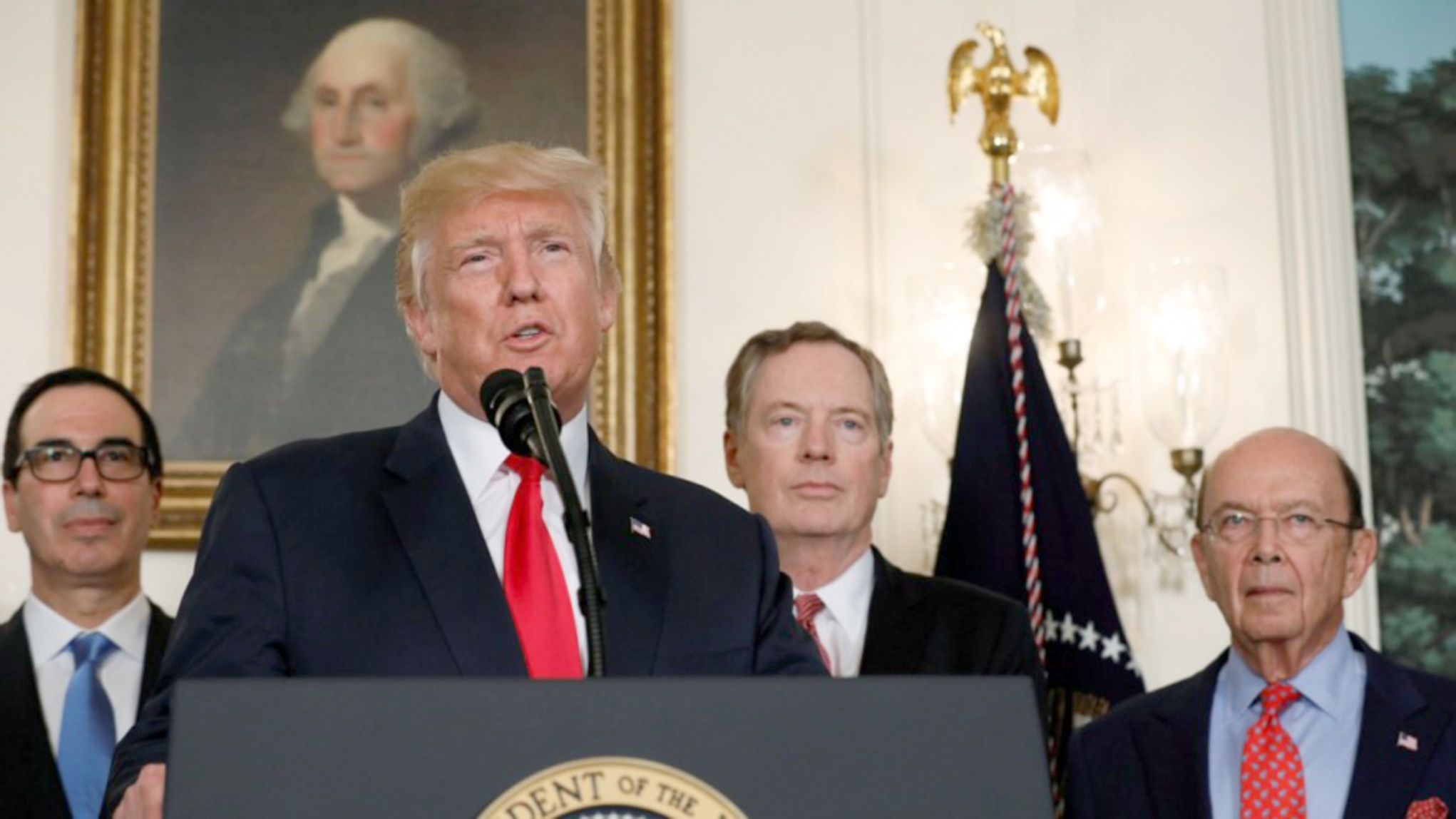By Shahid M Amin
During his presidential campaign, Donald Trump had won the support of many Americans, among the white working class, by claiming that the world was taking advantage of USA by ‘ripping it off’ in trade. He accused China, in particular, of using unfair trade practices to build large trade surpluses that deprive the American businessmen and workers of profits and jobs.
He promised that if elected President, he would end one-way traffic and outright exploitation. Most economists disagreed with Trump’s diagnosis of world trade and his proposed cure. But Trump being Trump, he has been doing exactly what he promised, by launching the dreaded trade wars with many countries in the world.
Figures show that the US trade deficit with China stood at $375 billion in 2017: the US exports to China were $130 billion while its imports from China were $506 billion. It mostly imports consumer electronics, clothing and machinery from China. Much of these imports are due to the practice of US manufacturers to send raw material to China for low-cost assembly. When these items are shipped back to USA, they are considered as imports.
Such trading is taking place because China can produce many consumer goods at lower cost than others, for two reasons: a lower standard of living which allows companies in China to pay lower wages to workers and an exchange rate that is seen as under-valued. But many economists argue that Trump seems unaware that trade protectionism against China would mean that US consumers will have to pay higher prices for the goods made in America. The consumer would prefer paying less for computers, electronics and other items even if it means that the manufacturing is done in China and not in USA, resulting in fewer jobs for US workers.
In keeping with his promise to lower the trade deficit with China, President Trump decided, in February 2018, to impose tariffs and quotas on solar panels and washing machines imported from China. In March, he announced a 25% tariff on steel imports and 10% tariff on aluminum.
On June 15, Trump imposed steep tariffs on billions of dollars’ worth of Chinese goods, ranging from dishwashers to aircraft tyres. China responded immediately by announcing its own tariffs on $35 billion worth of US goods. The stock market fell amidst fears that this might start a trade war, with the world’s two largest economies at each other’s throat.
A trade war would be against the pattern of inter-dependence that is an important aspect of US-China commercial relations. Due to persistent trade deficits, by February 2018, the US debt to China stood at $1.18 trillion i.e. 19 percent of the total public debt the US owes to foreign countries. That gives China a huge leverage over US fiscal policy.
There is much worry about what would happen if China were to threaten to or actually call in its loan. Among other things, it would result in rise in US interest rates and a crippling mortgage crisis, since millions of Americans have taken mortgages on housing and other items. Such a crisis could throw the US and world economy into recession. However, that situation would also not be in China’s own interest, since US consumers would be buying fewer Chinese goods.
Hence, China does not have a free hand but must carefully consider the implications of any kneejerk reaction that could result in starting a catastrophic crisis. A trade war is a situation when countries try to attack each other’s trade with taxes and quotas. When one country raises tariff i.e. a tax on imports, the other will respond in a tit-for-tat escalation. The end result will be hurting of economies, leading to political tension and even a threat to peace.Trump has also been at odds with traditional US friends in NATO and Europe, creating a rift in the old ties of solidarity between them. The G-7 Summit held in Canada earlier this month saw Trump openly feuding with EU leaders and the Canadian Prime Minister Justin Trudeau. Trump’s “America First” policies have caused deep diplomatic schisms, with the result that the Group of the world’s richest nations is more divided than at any time in its history.
Apart from hefty tariffs on steel and aluminum imports, Trump has threatened to impose the same for car imports. Earlier, he estranged traditional friends by walking out of environmental agreements, as well as on the international nuclear deal reached with Iran. French President Macron has worked hard to establish a good equation with Trump but he had to warn Trump, ahead of the Summit, that G-6 could survive even without USA.
Trudeau warned there could be a ‘robust discussion’ at the Summit. Undeterred, Trump fired back at the two leaders over Twitter, accusing them of imposing massive trade tariffs and other barriers against the US, which he said were “totally unfair to our farmers, workers and companies. Take down your tariffs and barriers or we will more than match you.” Trump warned them of retaliatory action.
Considering the background of very close relations between USA and Canada, the rift between Trump and Trudeau caused shock waves. The latter told a press conference that US tariffs on Canadian steel and aluminum were “insulting” to Canadians who had stood with the US in wars. He said that Canadians are polite and reasonable “but we will not be pushed around.” These comments angered Trump who accused Trudeau of back-stabbing. Quite understandably, some observers have described Trump as a “wrecking ball” and acting as an unguided missile.
The writer served as Pakistan’s Ambassador to Saudi Arabia, Soviet Union, France, Nigeria and Libya.


